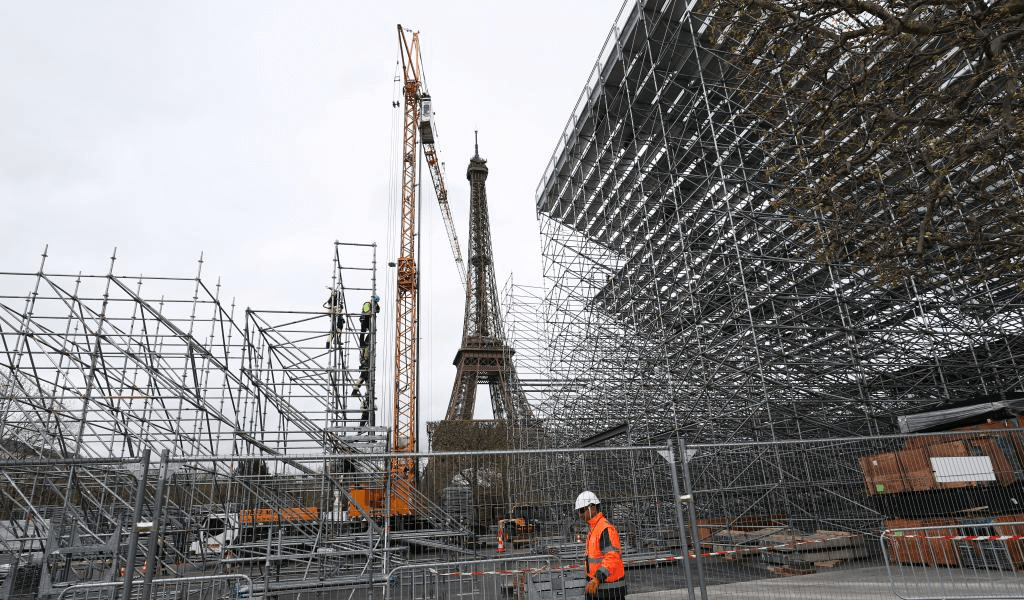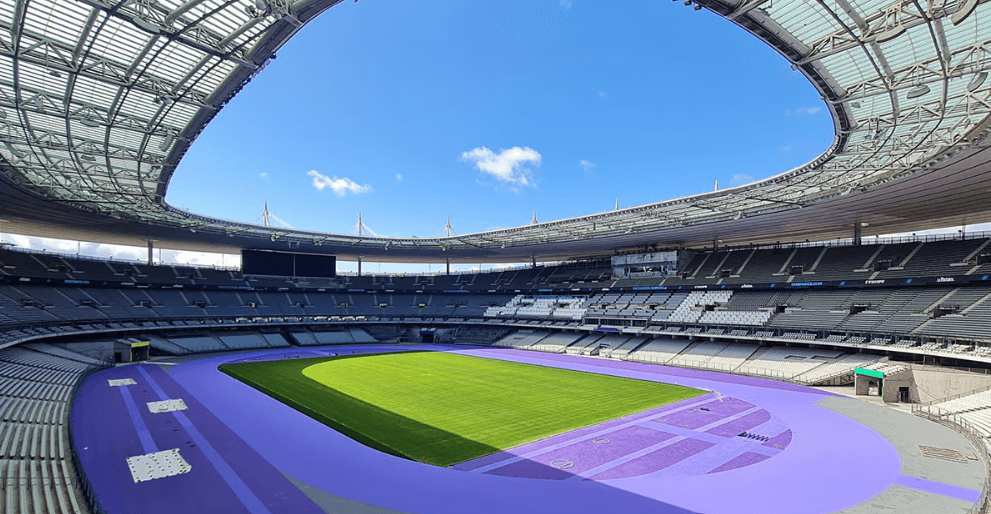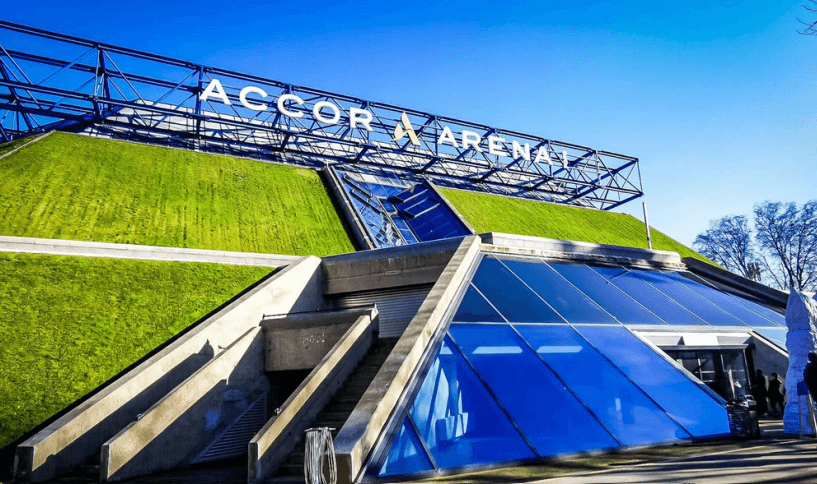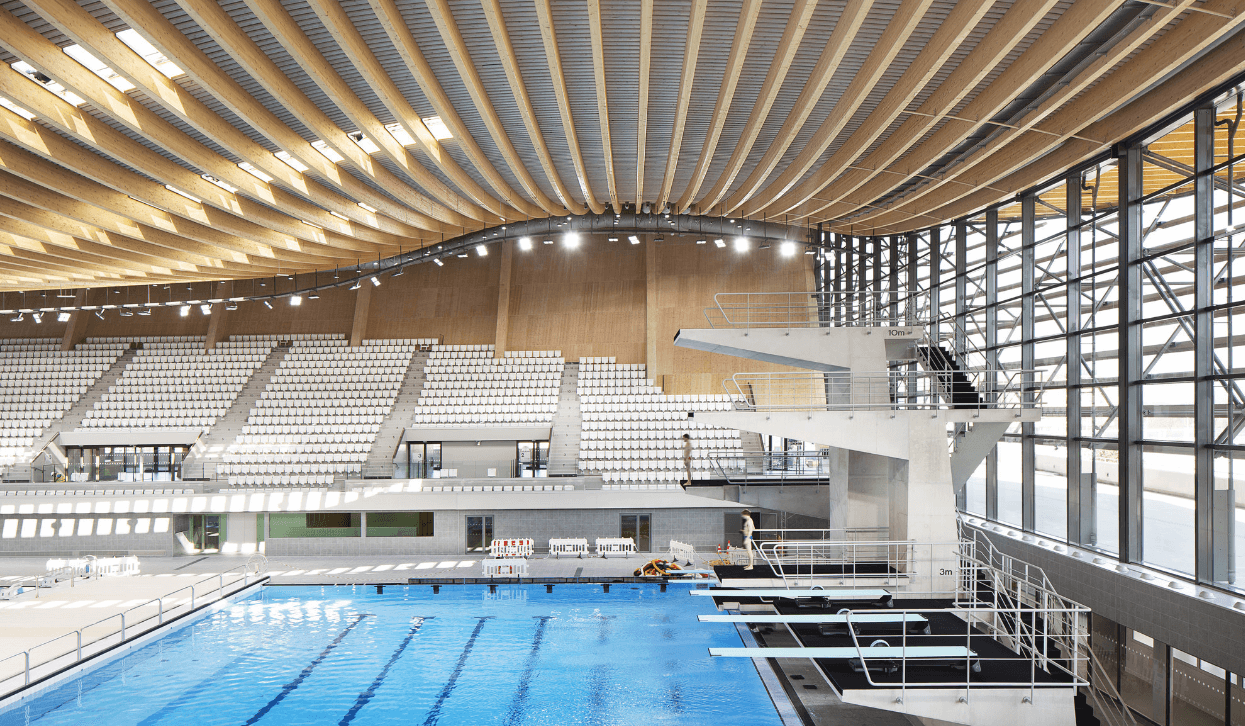A little Olympic context — though it’s undoubtedly an honour to host the Games, it’s also a bit of an economic albatross. For that reason, when Paris was chosen in 2017 it was one of only two cities still willing to invite the world in for a summer of sport.
Paris is determined to make this Games the most sustainable in history, minimizing the cost both financially and environmentally in order to keep the Olympics alive. Because much of the expense for the Games comes from the building of Olympic-specific structures, strategic construction techniques play a major role in their efforts.
This post will explore the methods and technologies Paris is deploying to prepare for the Olympics, promising to leave a legacy that extends far beyond the games.
Innovative Construction Techniques at the Heart of Paris’ Olympic Preparations
The preparation for the Olympics has become a catalyst for innovation in construction techniques. Engineers and architects in Paris are leveraging advanced technologies and materials to ensure that the infrastructure is ready on time, within budget, and sustainable.
One of the key challenges has been integrating modern construction technologies while preserving the iconic Parisian aesthetics. Techniques such as 3D printing and modular construction are being used alongside traditional materials like Paris stone to ensure that the new structures harmoniously blend with the city’s historic architecture.

3D Printing in Construction
3D printing is revolutionizing construction by allowing for the rapid production of complex components with high precision. In Paris, 3D printing is being utilized to create bespoke architectural elements that can seamlessly integrate with the city’s historical buildings. This technology is particularly useful for producing intricate facades and decorative elements that match the Parisian style.
For example, the use of 3D printing in the construction of temporary structures for the Olympics is reducing waste and speeding up the construction process. A report by Construction Dive estimates that 3D printing cuts construction time by up to 70% and costs by up to 60%.
Sustainable Building Practices to Future-Proof the Olympic Venues
Sustainability is at the forefront of the Paris Olympics construction strategy. From the use of recycled materials to installing energy-efficient systems, each project is designed with a long-term vision.
Many of the new constructions, including the Olympic and Paralympic Village and the Aquatic Centre, incorporate a high percentage of recycled and bio-based materials. For example, wood and bio-sourced materials like hemp and straw are prominently used in these buildings. The Aquatic Centre features a timber frame and a roof equipped with photovoltaic panels, making it one of the largest urban solar farms in France.
Spectators at the Games will sit on chairs made from recycled plastic collected from local bins, showcasing the circular economy in action. This initiative not only reduces waste but also highlights innovative uses for recycled materials. Buildings and venues are designed with energy efficiency in mind, featuring triple glazing, cooling floors, and geothermal energy systems.
Speed and Efficiency Through Modular Construction
To meet the tight deadlines associated with the Olympics, Paris has turned to modular construction. This technique allows for parts of the buildings to be prefabricated offsite and then assembled quickly on location. This not only speeds up the construction process but also significantly reduces waste and disturbance to the local community.
Modular construction is proving to be a game-changer for the Paris Olympics. By manufacturing components in a controlled environment and assembling them onsite, projects are completed faster and with greater precision. The Building Design + Construction Network highlights that modular construction can reduce project timelines by 30-50%. This approach also helps minimize disruptions to the local environment, which is crucial in a densely populated city like Paris.
Overcoming Urban Space Limitations
Paris is known for its dense urban environment, which presents unique challenges in terms of space and logistics. Innovative solutions such as vertical construction and the temporary repurposing of existing structures are key strategies being employed to maximize space and minimize impact on the daily lives of Parisians.
Vertical construction refers to building structures that primarily grow upwards, such as high-rise buildings, skyscrapers, office towers, and multi-story residential complexes. This type of construction focuses on maximizing the use of land in urban areas by building multiple floors above ground level. Vertical construction often involves complex engineering, architectural design, and the use of advanced construction techniques and materials to ensure the stability, safety, and functionality of the tall structures.
Ensuring Legacy and Post-Olympic Use
One of the most critical aspects of the construction projects for the Paris Olympics is the legacy they leave behind. Many of the new structures are designed to be repurposed post-Olympics. For example, temporary venues are constructed with the intention to be dismantled and recycled or reused in different forms, ensuring that the investment continues to benefit the city long after the games have ended.
The planning includes converting sports venues into public use facilities, such as community sports centers, schools, and residential units, maximizing the long-term benefits of the constructions.
Sustainability is achieved through various practices, such as using recycled materials, incorporating energy-efficient systems, and designing buildings with a post-Olympics use in mind, such as conversion into housing or commercial spaces.
The legacy includes enhanced infrastructure, improved transportation systems, and new housing opportunities, ensuring that the benefits of the Olympics will be enjoyed by Parisians for years to come.
This integration involves using modern methods and materials that mimic the style and properties of traditional materials, ensuring that new structures complement the historical architecture of Paris.
The Buildings, Old and New
For competition venues, roughly 95 percent of facilities used for the Games were already built or are temporary, with only 5 percent newly constructed with low-carbon techniques. — Anna Staropoli, Commercial Observer
Old – Stade de France
The Stade de France, located in the northern Paris suburb of Saint-Denis, is France’s national stadium and a symbol of French sports and culture. Completed in 1998, it was built for the FIFA World Cup, where it famously hosted the final in which France claimed victory over Brazil. With a seating capacity of over 80,000, it is the largest stadium in France and the sixth-largest in Europe.
The stadium’s unique design features a moveable stand that can be retracted to reveal a running track for athletics events, showcasing its multi-purpose functionality. One of its architectural highlights is the elliptical roof, which measures 13,000 square meters and appears to float above the stands, providing cover for spectators while maintaining an open and airy feel.
As the centerpiece for the Olympics, this iconic stadium is undergoing significant refurbishments to enhance seating, accessibility, and media facilities; these upgrades include a new purple track, big screen TVs everywhere, and bicycle parking to encourage greener transit.

Old – Accor Arena
The perfect choice for an event concerned with national pride and environmental sustainability, the Accor Arena is an architectural marvel located in the 12th arrondissement of Paris. Designed by architects Andrault-Parat, Prouvé, and Guvan, its construction began in 1981 and was completed in 1984. The arena’s distinctive pyramid shape, covered with a sloping grass roof, sets it apart in the Parisian landscape.
As a newer building, it doesn’t require as much of a facelift pre-Games, but it will be getting updated to host gymnastics and basketball events, focusing on improved spectator experience and logistical efficiency.

New – The Olympic Village
Located in the Saint-Denis area, this development is monumental, covering approximately 50 hectares. It’s designed to house over 14,000 athletes and officials. Post-Olympics, it will transition into residential housing, emphasizing sustainability and community living. In fact, this suburban area has been eyed for years for just this kind of housing development.
New – Aquatics Centre
Near the Stade de France, this new facility is under construction, set to feature diving and swimming pools. It’s a marvel of modern design, aiming for low environmental impact and high energy efficiency. As mentioned above, it is a model of eco-friendly design, featuring a timber frame and bio-sourced materials like hemp and straw, significantly reducing its carbon footprint.
The building incorporates a 5,000 m² roof with photovoltaic panels, creating one of France’s largest urban solar farms, while its cooling floors and triple glazing enhance energy efficiency. The Centre also emphasizes water recycling and includes green spaces to boost biodiversity. 90% of construction waste is recycled, and the facility will serve the local community post-Games, ensuring long-term environmental and social benefits.

Conclusion
The Paris Olympics are set to be not just a display of athletic prowess but also a showcase of cutting-edge construction techniques and sustainable development. The city is set to emerge not only as a winner in hosting the games but as a model for future mega-events in terms of urban planning and sustainability. The techniques being implemented today are creating a blueprint for the future, demonstrating that with innovation and foresight, even the grandest events can leave a positive, lasting impact on their host cities.
Fun Facts About the Paris Olympics
- Paris will become the second city ever to host the Summer Olympics three times – the Games were also held in the City of Light in 1900 and 1924. (For all you trivia nerds, the other city to hit the trifecta was London in 2012.)
- In an attempt to lower the carbon footprint, France pushed for flying air taxis to transport athletes. Sounds impossibly futuristic right? And it kind of was – the project was panned by the Paris city council, but Los Angeles transport officials expect to have air cabs in operation by the time they host the 2028 Summer Olympics.
- Athletes in the open-water swimming and triathlon events will compete in the River Seine. If you’ve ever been to Paris and thought going in the water would certainly mean coming out with extra toes, you’ll be glad to hear the city has been working on improving the river’s water quality to make this possible.
- Some events will take place in iconic locations, including beach volleyball at the foot of the Eiffel Tower and equestrian events at the Palace of Versailles. And if that wasn’t historically significant enough for you, all the medals awarded to athletes will be infused with fragments of iron from the Eiffel Tower. Don’t worry: they’re sourcing parts which were once in the Eiffel Tower but have been replaced over the years during renovations – this is not a Jenga situation.